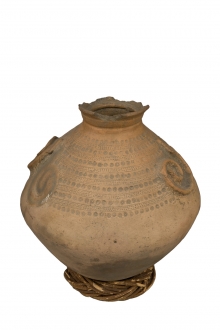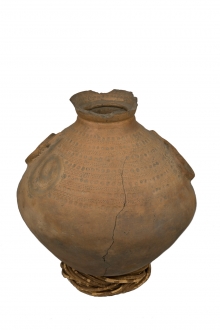TELDAP Collections
| Paiwan Male Earthenware Pot |
|
Distribution
Customs and Traditions Usually, such earthenware pots were the heirlooms of the chieftain and the nobility. The number and the condition of the pots were measures of the chieftain's wealth and stature (Sakuliu, 1993). The earthenware pots can be divided into several categories based on function: Paiwan artist Pavavalung Sakuliu surveyed the antique earthenware pots of his tribe and concluded that there are three types: male pots called “uqalai a edredan”, which are decorated with hundred-pace pit viper, sun or human figure patterns; female pots called “vavaian a dredredan” with protruding bumps and indentations in the center and neutral pots called “ pinusingsingan uqalai” which possess the characteristics of both male and female pots. Among the three types, the neutral pots are most common. The earliest pots were round without any patterns. Later on, pots were round but with a flat bottom and were decorated with simple sun patterns. Then, the hundred pace pit viper pattern appeared and in more recent times patterns became more diverse (Sakuliu, 1993).
This is a male pot with a pair of hundred pace pit viper patterns on both sides. However, one of the attached snakes has fallen off. All around the pot are seven rows of spiral patterns and dots. It possesses a short neck and wide body, measuring 38 centimeters horizontally and 37 centimeters vertically, with an opening of 14 centimeters in diameter. There are a number of cracks around the opening and a crack in one of the snake patterns. Thus, much care is needed to preserve this item and to prevent further damage. This pot features a seat made from rattan, which was referred to as “badagalan” in the Paiwan language.
Department of Graphic Communications and Digital Publishing, Shih Hsin University Digital archiving project of the Shung Ye Museum of Formosan Aborigines
|














